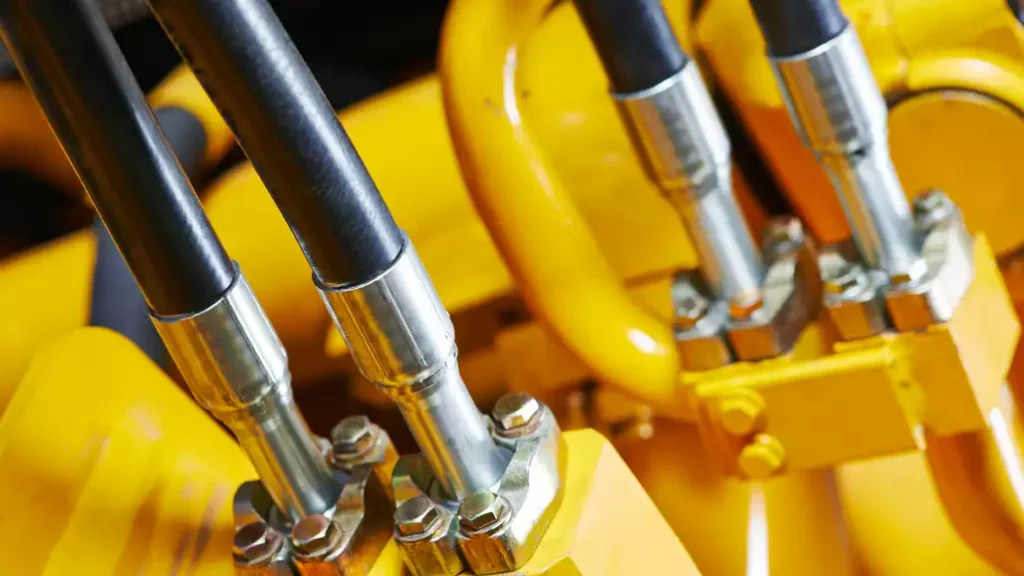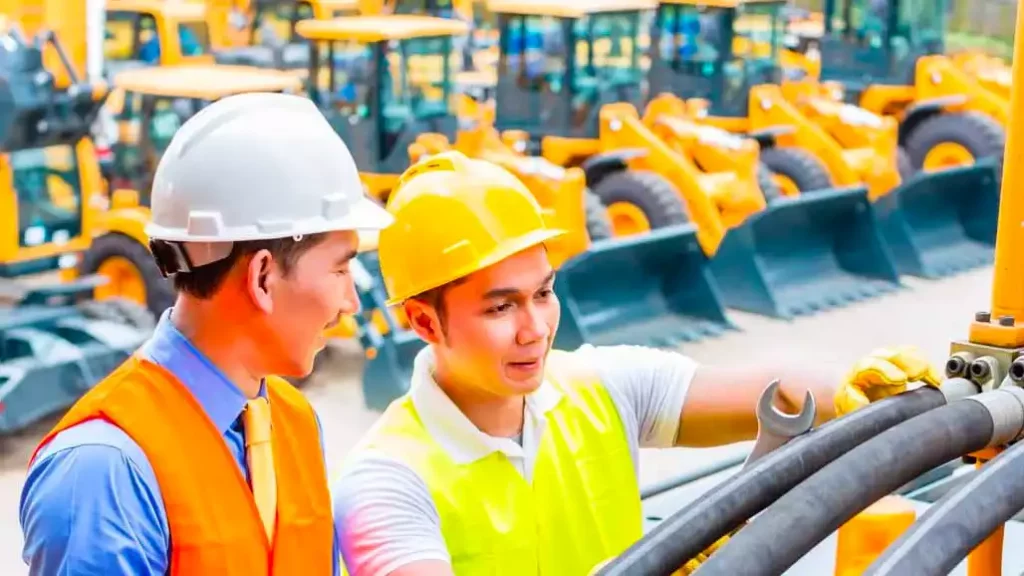Hydraulic hoses are critical components in hydraulic systems, used to transfer fluid from one location to another. However, just like any other mechanical component, hydraulic hoses have a finite service life and can fail over time due to various factors such as abrasion, bending, high temperatures, and pressure fluctuations.

Here are some useful methods for you to extend hydraulic hose shelf life in the following:
- Proper installation and routing – Ensure that hoses are installed and routed correctly to reduce the risk of abrasion and multi-plane bending.
- Use of hydraulic hose protector – Consider using protective covers, such as polyethylene spiral wrap, to shield hoses from external damage.
- Regular maintenance – Regular inspections and maintenance can help identify potential issues before they lead to hose failures.
- Use of high-quality hoses – High-quality hoses with durable materials and reinforced structures are more likely to last longer and perform better.
- Selecting hoses suitable for the application – Ensure that hoses are selected based on the operating conditions and requirements of the application.
Proper Installation and Routing

Proper hydraulic hose installation and routing of hydraulic hoses are crucial in extending their service life and avoiding failures. When installing hydraulic hoses, it is important to consider factors such as the routing path, the number of bends and turns, and the proximity to other components.
Poor routing and installation can result in hoses rubbing against each other or other surfaces, leading to abrasion and wear over time. It can also result in multi-plane bending, which can cause twisting of the hose’s wire reinforcement and reduce its service life.
To avoid these issues, hoses should be installed and routed in a way that minimizes contact with other components and reduces the number of bends and turns. It is also important to secure clamps correctly to prevent hoses from moving and being subjected to unwanted stress and strain.
By taking the time to properly install and route hydraulic hoses, it is possible to extend their service life and reduce the risk of failure.
Hydraulic Hose Protector

Protective covers, such as polyethylene spiral wrap, spiral hydraulic hose protector, and fire sleeve, can be used to extend the life of hydraulic hoses by shielding them from external damage. Abrasion is one of the most common causes of hydraulic hose failure, and it can occur when hoses rub against each other or surrounding surfaces.
By using protective covers, it is possible to reduce the risk of abrasion and prevent damage to the hose. The spiral wrap acts as a barrier, protecting the hose from contact with other components and external surfaces.
In addition to preventing abrasion, protective covers can also offer other benefits such as reducing the risk of kinking, crushing, and impact damage. They are also relatively inexpensive and easy to install, making them a cost-effective solution for extending the life of hydraulic hoses.
Overall, the use of protective covers is an effective way to extend the service life of hydraulic hoses and minimize hydraulic hose failure.
Regular Hydraulic Hose Maintenance

A hydraulic hose is an important component of hydraulic systems, as it carries the fluid used to transmit power. Regular maintenance of hydraulic hoses is essential to ensure their longevity and to prevent unexpected failures. Here are some of the key steps involved in maintaining hydraulic hoses:
- Inspection: Regularly inspect the hoses for signs of damage, such as cracks, cuts, bulges, or leaks. If any of these are found, the hose should be replaced immediately.
- Cleaning: Keep the hoses clean and free of dirt and debris. Dirt and debris can cause abrasion, which can lead to premature failure of the hose.
- Routing: Ensure that the hoses are properly routed, with adequate support to prevent kinking or twisting. Hoses that are not properly supported can experience excessive wear and tear.
- Tightening: Check the fittings and connections for proper tightness. Loose connections can result in leaks and loss of hydraulic fluid.
- Flushing: Flush the hydraulic system periodically to remove any contaminants that may have accumulated over time.
- Replacing of hydraulic hose: Replace hoses that are showing signs of wear and tear, or that have been in service for a long period of time.
Use High-Quality Hydraulic Hose
Using high-quality hydraulic hoses is important for several reasons:
- Durability: High quality hydraulic hoses are made from durable materials and are designed to withstand the pressure, temperature, and fluid compatibility requirements of the hydraulic system. This helps to extend the life of the hose and reduce the risk of failure.
- Leak resistance: High quality hydraulic hoses are less likely to leak, which can reduce the risk of contamination of the hydraulic fluid and prevent system failures.
- Improved performance: High quality hydraulic hoses have better flow characteristics and are less likely to kink or deform, which can result in improved system performance.
- Cost savings: While high quality hydraulic hoses may have a higher upfront cost, they can ultimately result in cost savings by reducing the need for frequent replacements and avoiding costly system failures.
Kingdaflex offers a qualified hydraulic hose, as a leading hydraulic hose manufacturer in China, each hydraulic hose will be inspected strictly to ensure all things are best before loading to the container.
Proper Application

Choosing the proper hydraulic hose for your application is crucial to ensure the safety, reliability, and efficiency of your hydraulic system.
Here are some factors to consider when selecting a hydraulic hose:
Pressure rating:
The hydraulic hose must be rated for the maximum operating pressure of the system. This information can be found in the manufacturer’s specifications or by consulting with a hydraulic hose expert.
Temperature:
The hydraulic hose must be able to handle the temperature range of the fluid and the environment in which it will be used. Some hoses are designed to handle high temperatures, while others are designed for low temperature applications.
Fluid compatibility: The hydraulic hose must be compatible with the type of fluid used in the system. Different types of fluid can have different chemical properties that can affect the hose material, so it is important to choose a hose that is compatible with the fluid in use.
Size: The size of the hydraulic hose must match the size of the fittings and components in the system. This will ensure a proper fit and prevent leaks.
Bend radius: The hydraulic hose bend radius of the hydraulic hose must be taken into consideration, as hoses with a tight bend radius can be more prone to kinking and collapse.
By taking these factors into consideration, you can select the proper hydraulic hose for your application and ensure the longevity, safety, and efficiency of your hydraulic system.
Final Thoughts
Overall, all things above about how to extend a hydraulic hose life span, and please feel free to contact us at any time if you are looking for a premium hydraulic hose.

